RT32 CPCS Blue Card Renewal Mock Test with 124 Questions and Answers / A32 Soil Landfill Compactor
£15.00 Original price was: £15.00.£9.95Current price is: £9.95.
Practice Smarter, Not Harder – Mastering the RT32 Soil Landfill Compactor Blue Card Renewal Touch Screen Test!
- Questions & Answers: based on the latest RT 32 Soil Landfill Compactor – CPCS Renewal Test Revision FACTSHEET
- Categories: A32 – Soil Landfill Compactor
- Number of Multiple-choice Questions: 124
- Format: PDF
- Delivery time: Instant download after checkout
- Refunds: No refunds once downloaded, unless you ordered duplicates by mistake.
If there are any issues with your download, please email CardRenewalTest@gmail.com and we’ll send it ASAP
Title: Ace Your CPCS Blue Card Renewal: The Ultimate RT32 Soil Landfill Compactor Mock Practice Test
Are you an RT32 Soil Landfill Compactor operator facing the challenge of renewing your CPCS blue card? Perhaps you’ve already attempted the renewal test and found it challenging. Fret not! We’ve got your back.
Why You Need Our RT32 Soil Landfill Compactor CPCS Blue Card Renewal Mock Practice Test
1. Tailored to the Latest NOCN CPCS RT32 Factsheet:
Stay ahead of the curve with our mock practice test, meticulously crafted based on the latest information from the NOCN CPCS RT32 Soil Landfill Compactor factsheet. This means you’re getting the most up-to-date and relevant questions to prepare for your renewal.
2. Efficient Study Approach:
Tired of wading through extensive blocks of text? Our mock test is designed for efficiency, providing you with 124 multiple-choice questions and answers. This focused approach allows you to practice questions and understand the nuances of the exam without overwhelming text.
3. Targeted Learning for Soil Landfill Compactor Operators:
This mock test is specifically designed for operators like you who work with soil and landfill compactors. It’s not a generic practice test – it’s tailored to the challenges and requirements you face in your day-to-day operations.
How to Ace Your CPCS Blue Card Renewal Test
1. Purchase and Download:
Visit our website, cardrenewaltest.co.uk, and grab your copy of the RT32 Soil Landfill Compactor CPCS Blue Card Renewal Mock Practice Test. It’s an instant digital download, so you can start practicing right away.
2. Create a Study Plan:
Plan your study sessions wisely. Break down the questions into manageable sections and allocate dedicated time to practice. Consistency is key, so make a schedule that suits your routine.
3. Understand the Rationale:
Don’t just memorize answers; understand the rationale behind each one. Remember, the questions on the actual test may be worded differently.
4. Simulate Exam Conditions:
To boost your confidence and familiarize yourself with the exam environment, simulate test conditions. Set a timer, eliminate distractions, and practice in a quiet space.
5. Review and Repeat:
After completing the mock test, review the questions and explanations. Identify areas where you need improvement and repeat the process. Repetition is the key to mastery.
Conclusion:
Don’t let the CPCS blue card renewal test be a roadblock in your career. Our RT32 Soil Landfill Compactor CPCS Blue Card Renewal Mock Practice Test is your shortcut to success. Empower yourself with targeted practice, gain confidence, and extend your CPCS blue card for another 5 years. Your success story starts with smart, efficient, and focused preparation. Get started today!
Here is a summary of the main points from the RT32 Soil – Landfill Compactor Factsheet
Preparation and Completing Work (Preparation):
- Soil and landfill compactors compact earth or waste-type materials, equipped with a front-mounted blade for spreading and leveling during compaction.
- The factsheet focuses on landfill operations, highlighting the hazardous nature of the working environment.
- Pre-use checks conforming to manufacturers’ requirements are crucial to avoid near-misses and injuries caused by deteriorated performance or component failure.
- Operators must report faults or defects immediately, even seemingly minor ones, seeking expert advice to prevent invisible or worsening issues.
Working Safely and With Others (Working Safely):
- Before compacting, the area should be checked for voids or weak areas that could cause the compactor to get stuck or become unstable.
- Recovery procedures for stuck vehicles or machines require specific risk assessments and coordinated planning to avoid injuries and deaths.
- Personnel must be clear of the path when a dozer or compactor is reversed, especially during towing, with communication vital during extraction.
- Compactors are equipped with a roll-over protective structure (ROPS) to minimize injuries in case of rollovers, emphasizing the importance of wearing seatbelts.
- Engine shutdown when exiting the cab prevents unintentional movement, crucial for safety, especially with hydraulically operated transmissions.
Working Efficiently:
- Fuel efficiency is crucial for high-production compactors in landfill operations. Operating at optimum engine speed, as indicated by manufacturers, minimizes fuel consumption.
- Engine shutdown when leaving the cab not only enhances safety but also reduces fuel wastage.
- Efficient compaction involves working to the required specification without unnecessary passes. The recommended maximum number of passes is six for optimal compaction density.
- A distance of 20 meters is considered the maximum length of a compaction pass for efficient working.
Reversing and Visibility (Travelling):
- Reversing accidents are significant workplace incidents, and guidance recommends eliminating reversing where possible. If essential, operations should be restricted to a controlled area, keeping it clear of delivery and tipping vehicles.
- Visiting delivery drivers are at risk in the tipping area due to limited visibility from the operator’s station. Vision aids like mirrors and CCTV systems have limitations, necessitating caution.
- Operators must use all available aids and ensure a clear reversing path before reversing, preventing accidents involving pedestrians, vehicles, or plant.
Compacting Techniques (Working Tasks):
- The main function of a landfill compactor is to provide maximum compaction with minimal passes, influenced by ground pressure and wheel type.
- Track-type dozers differ in design, emphasizing ground pressure minimization, while compactors’ steel wheels apply greater ground pressure for efficient compaction.
- Factors affecting compaction rate include clogging of steel wheels with material, spreading the load and reducing downforce.
- To ensure total compaction, operators must consider the gap between steel wheels and vary the machine’s position on each pass.
- Efficient working on slopes involves a 45-degree angle, preventing inconsistent compaction due to biased weight distribution.
- Steeper slopes reduce compaction, with a recommended maximum incline of 1 in 3 for efficient working.
- Continuous equipment use necessitates consideration of whole-body vibration, addressed through cab design and adjusted suspended seats following operator changes.
2 reviews for RT32 CPCS Blue Card Renewal Mock Test with 124 Questions and Answers / A32 Soil Landfill Compactor
Add a review Cancel reply
Related products
CPCS Blue Card Renewal Tests
RT19 CPCS Blue Card Renewal Mock Test with 123 Questions and Answers / A19 Grader
CPCS Blue Card Renewal Tests
RT23 CPCS Blue Card Renewal Mock Test with 125 Questions and Answers / A23 Skid Steer Loader
CPCS Blue Card Renewal Tests
RT12 CPCS Blue Card Renewal Mock Test with 130 Questions and Answers / A10, A12 Excavator 180°
CPCS Blue Card Renewal Tests
RT66 CPCS Blue Card Renewal Mock Test with 133 Questions and Answers / A66 Compact Crane
CPCS Blue Card Renewal Tests
RT50 CPCS Blue Card Renewal Mock Test with 141 Questions and Answers / A50 Loader Securer STGO
CPCS Blue Card Renewal Tests
RT39 CPCS Blue Card Renewal Mock Test with 140 Questions and Answers / A39 Skip Handler
CPCS Blue Card Renewal Tests
RT37 CPCS Blue Card Renewal Mock Test with 122 Questions and Answers / A37 Trencher
CPCS Blue Card Renewal Tests





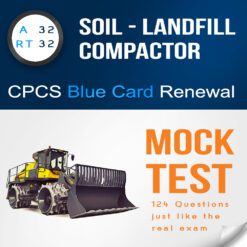

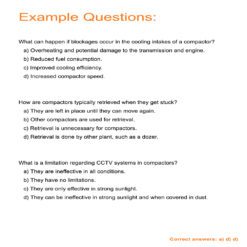

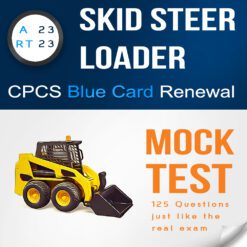
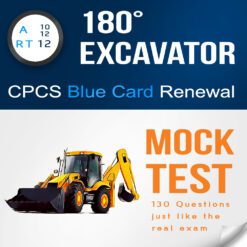




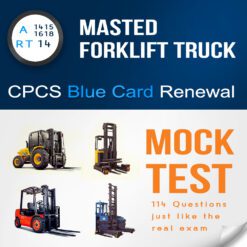

ASh –
After payment I couldn’t figure out how to download it but I emailed them and they sent me the file within an hour.
As for the practice questions they do cover the whole of the compactor fact sheet and so it’s a good test of your knowledge.
It did help me get ready for the renewal test
Jamal –
Jamal